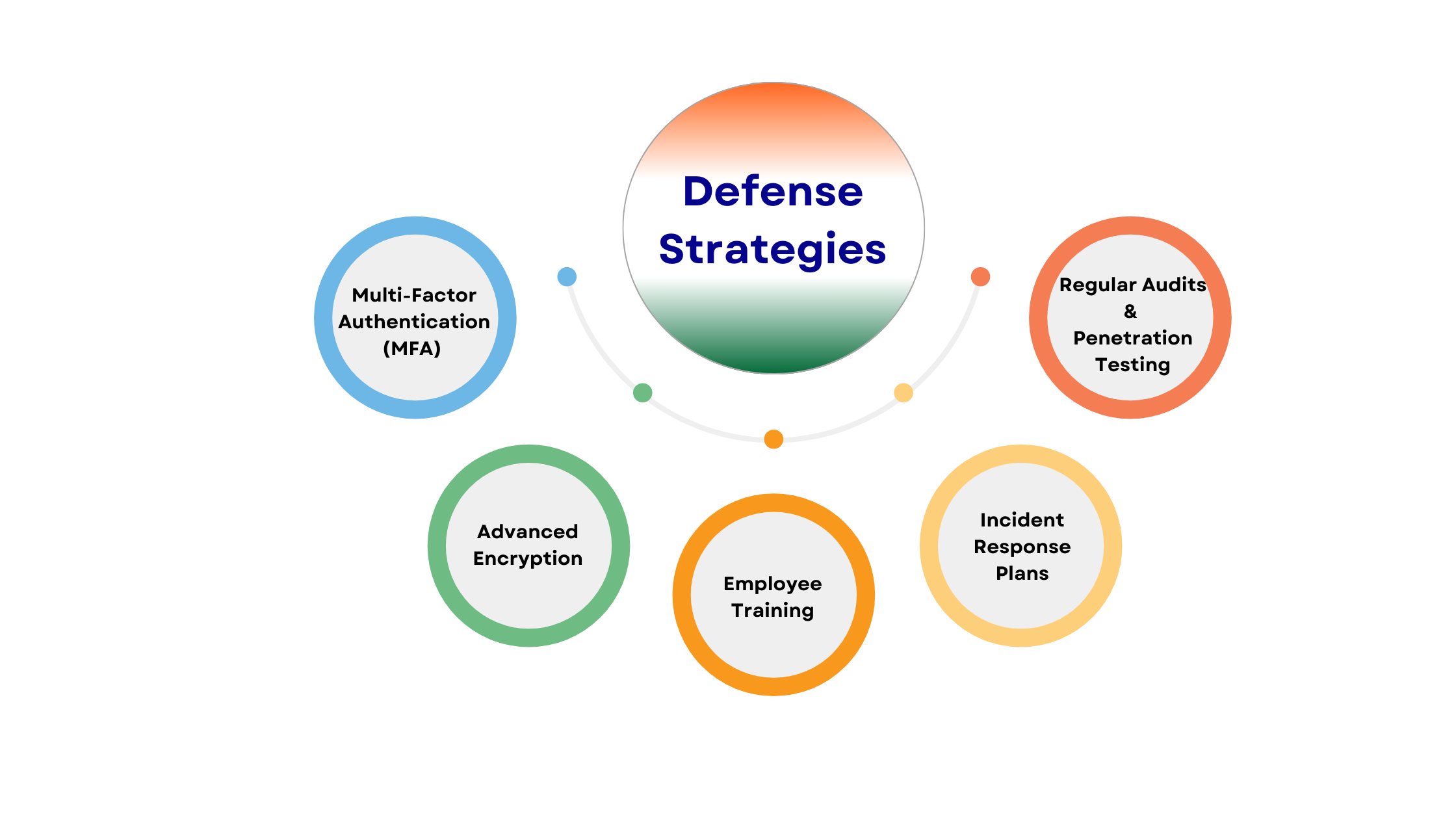
In an era where digital transactions have become the backbone of economic activity, India's financial sector stands as both a pillar of strength and a target for cybercriminals. With over 164 billion digital transactions processed in 2023 alone in India, the stakes have never been higher. This article delves into the evolving landscape of cybersecurity in Indian banking, exploring the threats, defenses, and the path forward.
The financial sector is not just a pillar of the economy but a lifeline for millions. In 2023, total assets in the public and private banking sectors were $1686.70 billion and $1016.39 billion, respectively. Public sector banks alone accounted for 58.31% of the total banking assets, highlighting their significance in the nation's economic structure. As we celebrate Independence Day, let’s recognize the importance of safeguarding this sector from cyber threats that could jeopardize our economic sovereignty.
India's banking industry has undergone a remarkable transformation, evolving from paper-based processes to a fully digital environment. A key milestone in this journey is the widespread adoption of the Unified Payments Interface (UPI), which has revolutionized how transactions are conducted. In a report by Worldline, the second half of 2023 alone saw a 56% year-on-year growth in volume of UPI transactions, reaching 65.77 billion transactions, up from 42.09 billion in H2 2022. During the same period, the value of these transactions increased by 44%, rising from INR 69.36 trillion to INR 99.68 trillion. This dramatic growth underscores the increasing reliance on digital banking platforms and highlights the critical need for robust cybersecurity measures to protect these systems.
The digital transformation has opened new methods for cybercriminals, who employ increasingly sophisticated methods to breach the security of banks. Attackers in India range from organized crime syndicates and state-sponsored actors to insiders with malicious intent. According to a report from the Reserve Bank of India (RBI), the country's financial sector faced over 13 lakh cyber-attacks between January and October 2023, amounting to approximately 4,400 attacks per day. This large number shows how constant and widespread these attacks are. Major attack types include:
Phishing: Often the entry point for more complex attacks, phishing techniques trick the employees into revealing sensitive information.
Ransomware: Cybercriminals encrypt a bank's data and demand a big ransom, hampering operations and undermining the trust of customers.
DDoS Attacks: These attacks overwhelm online banking services, leading to disruption of transactions and damaging the institution's reputation.
In a recent cyber-attack in June 2024, hackers targeted a bank branch in Noida, successfully stealing Rs 16.50 crore. The attackers used phishing techniques to obtain the bank manager’s login credentials, gaining access to the bank’s Real-Time Gross Settlement (RTGS) system. This breach went unnoticed until a balance sheet revealed the unauthorized transactions.
In August 2024, a ransomware attack by the group RansomEXX v2.0 targeted C-Edge Technologies, a service provider for nearly 300 small Indian banks, disrupting ATM withdrawals and UPI transactions. The attack exploited a vulnerability in a Jenkins server used by Brontoo Technology Solutions. The National Payments Corporation of India (NPCI) isolated the affected banks to contain the attack, which impacted about 0.5% of the country’s payment volumes.
In response, the Reserve Bank of India (RBI) has issued guidelines, such as:
Cybersecurity Framework (2016): Requires banks to implement robust IT controls and continuous surveillance.
Digital Payments Security Controls (2020): Mandates stricter security for digital payment systems.
Master Direction on Information Technology Governance, Risk, Controls and Assurance Practices (2023): Provides a comprehensive framework for IT governance, risk management, and internal controls, ensuring that banks maintain strong oversight and effective management of their IT infrastructure.
In April 2024, the RBI blocked Kotak Mahindra Bank from onboarding new customers through its online and mobile banking channels and from issuing new credit cards. This action was taken due to serious deficiencies in the bank’s IT infrastructure and information security practices, which had led to frequent outages and significant customer inconvenience. The RBI’s enforcement of these guidelines demonstrates its commitment to ensuring that banks maintain operational reliability and highest standards of cybersecurity. However, with cyber-attacks increasing rapidly, more actions like these are required to ensure that all financial institutions are held accountable and are continuously improving their IT defenses.
To counteract these threats, financial institutions are implementing several strategies:

Multi-Factor Authentication (MFA) requires multiple forms of verification for account access, significantly reducing the risk of unauthorized entry even if passwords are compromised.
Employee Training equips staff to recognize and avoid cyber threats, forming a crucial first line of defense against attacks like phishing and malware.
Advanced Encryption protects sensitive data in transit and at rest by converting it into an unreadable format, safeguarding financial and personal information.
Incident Response Plans outline steps for quickly addressing security breaches, minimizing damage, downtime, and impact on operations and customers.
Regular Audits and Penetration Testing identifies and addresses vulnerabilities proactively, helping institutions stay ahead of potential threats and maintain an up-to-date security posture.
Despite these measures, the constant attacks like the recent incidents in Noida and the ransomware attack on C-Edge Technologies indicate that there are still gaps in the cybersecurity defenses. Banks need to move from a reactive to a proactive stance, investing in advanced threat intelligence systems and fostering a cybersecure culture in their organization. Additionally, improved collaboration between banks, regulators, and cybersecurity experts could help in quickly identifying and addressing emerging threats.
As India celebrates its Independence Day, the need to protect the financial sector has never been more critical. By adopting a forward-looking approach and implementing robust cybersecurity measures, banks can safeguard not just customer assets but also the trust that underpins our nation’s economic future. Stakeholders—from banks and regulators to customers—must work together to ensure that India's financial vault remains secure against the growing tide of cyber threats.




